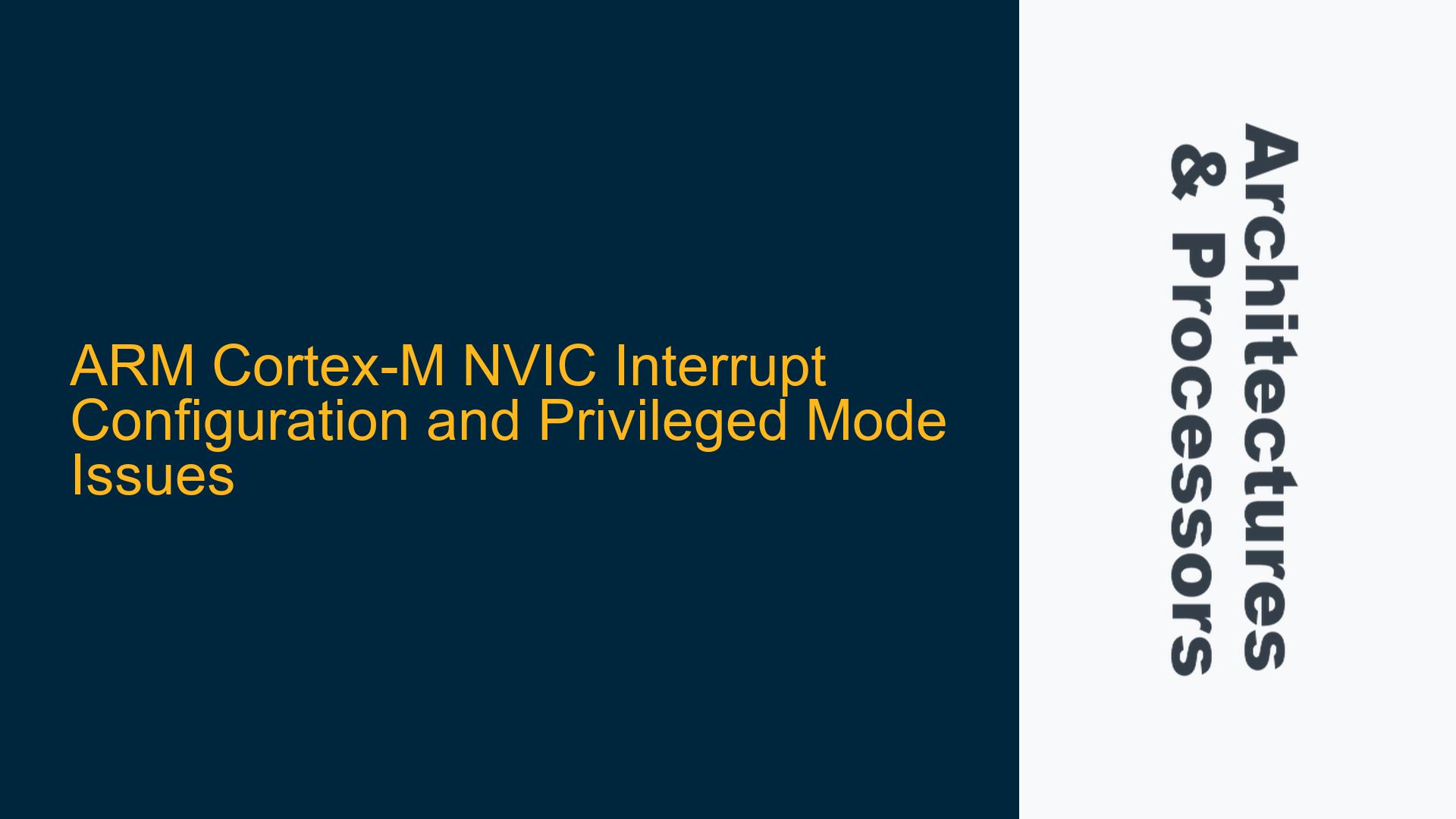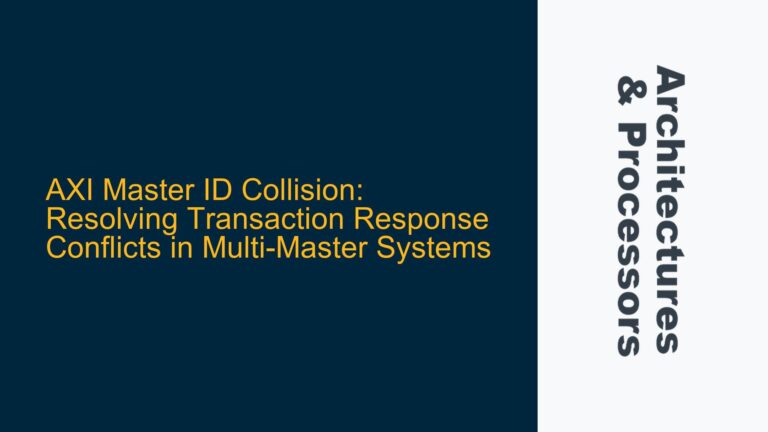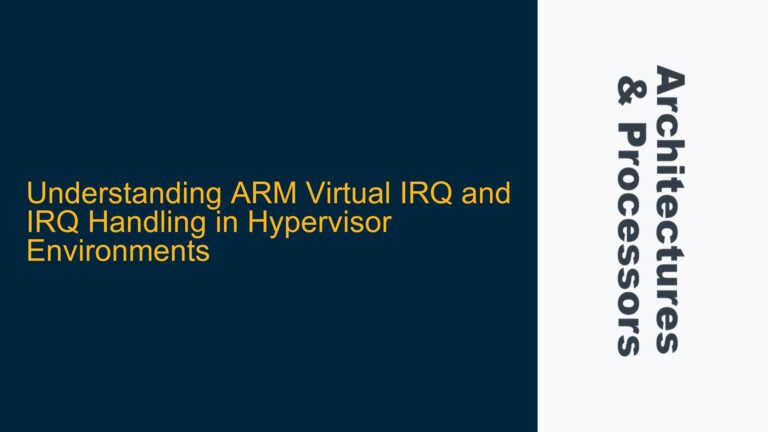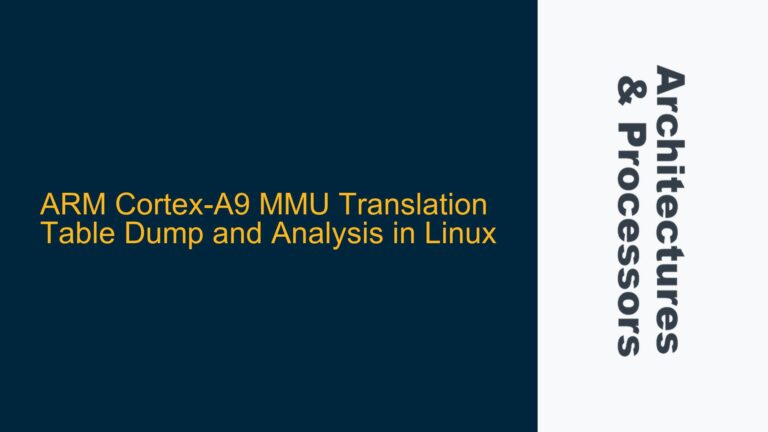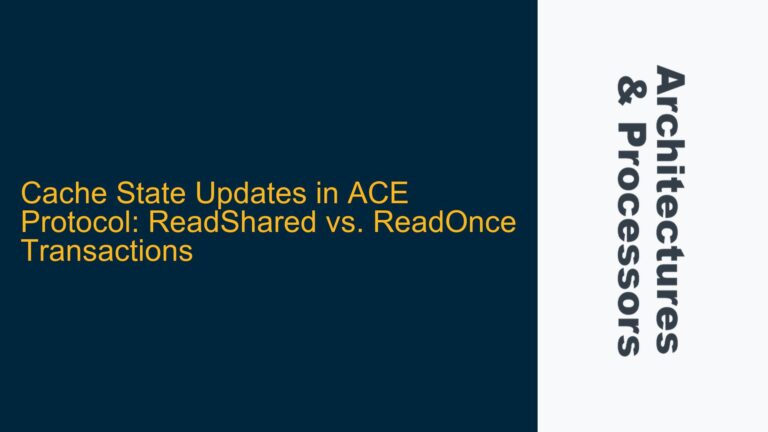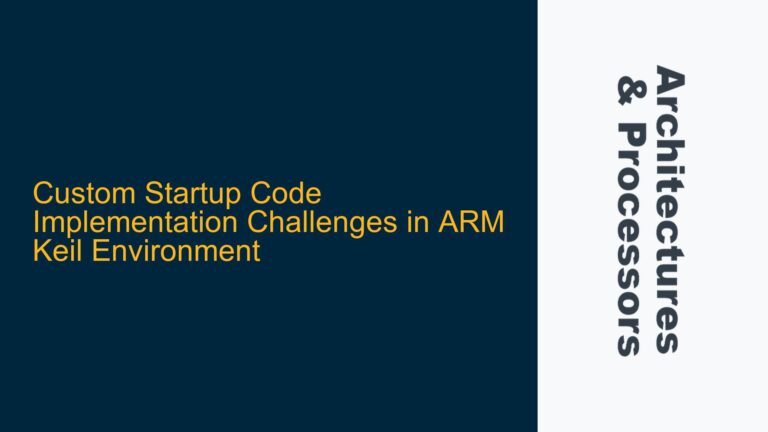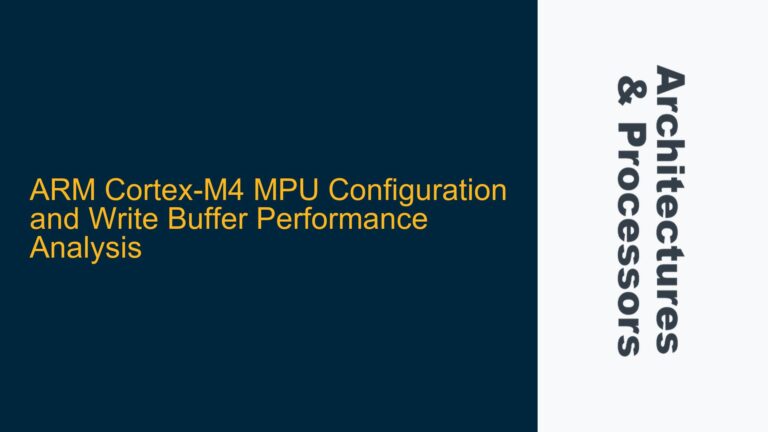Incorrect NVIC Interrupt Enable and Vector Table Configuration
The core issue revolves around the incorrect configuration of the Nested Vectored Interrupt Controller (NVIC) for enabling interrupts on an ARM Cortex-M processor, specifically for TIMER2. The user attempts to enable the interrupt for TIMER2 by manipulating the NVIC registers directly, but encounters issues with the interrupt not triggering as expected. The primary problems lie in the incorrect bit manipulation for enabling the interrupt, improper handling of the vector table, and misunderstandings about privileged mode.
The NVIC is a critical component of the ARM Cortex-M architecture, responsible for managing interrupts and exceptions. Each interrupt source, such as a peripheral timer, has a corresponding interrupt request (IRQ) number. In this case, TIMER2 corresponds to IRQ 28. To enable an interrupt, the corresponding bit in the Interrupt Set-Enable Register (ISER) must be set. Additionally, the interrupt handler function must be correctly placed in the vector table, which is a table of function pointers located at a specific memory address.
The user’s initial code attempts to enable the interrupt by setting bits in the NVIC_ISER0 register and copying the interrupt handler function to the vector table. However, there are several issues with this approach. First, the bit manipulation for enabling the interrupt is incorrect. The user attempts to set bits 2, 3, and 4 (0x001C) instead of bit 28 (0x10000000). Second, the vector table manipulation using memcpy is problematic because it assumes a specific memory layout and does not account for potential alignment issues or the need for proper synchronization.
The user later updates the code to correct the bit manipulation but introduces additional complexity by attempting to enter privileged mode using a Supervisor Call (SVC) instruction. This approach is flawed because the SVC instruction is used to generate a supervisor call exception, which requires an exception handler to be in place. Without a properly configured exception handler, the SVC instruction will not achieve the desired result. Furthermore, the user’s assumption that privileged mode needs to be explicitly enabled is incorrect. After reset, the processor starts in privileged mode by default.
Misconfigured Bit Manipulation and Privileged Mode Misunderstanding
The root causes of the issue can be traced back to several key misunderstandings and misconfigurations. First, the incorrect bit manipulation in the NVIC_ISER0 register is a critical error. The NVIC_ISER0 register is used to enable interrupts by setting the corresponding bit for each IRQ. For IRQ 28, the correct bit to set is bit 28, which corresponds to the value 0x10000000. The user initially sets bits 2, 3, and 4 (0x001C), which corresponds to IRQs 2, 3, and 4, not IRQ 28. This mistake prevents the TIMER2 interrupt from being enabled.
Second, the vector table configuration is problematic. The vector table is a critical data structure that contains the addresses of interrupt and exception handlers. The user attempts to copy the interrupt handler function to the vector table using memcpy, but this approach is not reliable. The vector table must be properly aligned, and the memory layout must be carefully managed to ensure that the interrupt handler is correctly placed. Additionally, the use of memcpy does not guarantee proper synchronization, which can lead to race conditions or incorrect behavior.
Third, the user’s attempt to enter privileged mode using the SVC instruction is based on a misunderstanding of the ARM Cortex-M privilege model. After reset, the processor starts in privileged mode, which allows access to all system resources, including the NVIC registers. The SVC instruction is used to generate a supervisor call exception, which can be used to switch from unprivileged to privileged mode, but only if an exception handler is properly configured. Without a properly configured exception handler, the SVC instruction will not achieve the desired result. Furthermore, the user’s assumption that privileged mode needs to be explicitly enabled is incorrect.
Finally, the user’s code contains several other issues, such as the use of hardcoded memory addresses and the lack of proper error handling. These issues can lead to undefined behavior and make the code difficult to debug and maintain.
Correcting NVIC Configuration and Ensuring Proper Privileged Mode Access
To resolve the issues, the following steps should be taken:
-
Correct Bit Manipulation in NVIC_ISER0: The correct bit manipulation for enabling IRQ 28 is to set bit 28 in the NVIC_ISER0 register. This can be achieved by using the following code:
*NVIC_ISER0 |= 0x10000000; // Enable IRQ 28 (TIMER2)This ensures that the TIMER2 interrupt is correctly enabled.
-
Proper Vector Table Configuration: The vector table should be configured using a more reliable approach. Instead of using
memcpy, the interrupt handler function should be directly assigned to the correct entry in the vector table. This can be done using the following code:vector_table[28] = TIMER2_IRQHandle; // Assign TIMER2 interrupt handler to IRQ 28This ensures that the interrupt handler is correctly placed in the vector table.
-
Remove Unnecessary Privileged Mode Manipulation: Since the processor starts in privileged mode after reset, there is no need to explicitly enable privileged mode using the SVC instruction. The SVC instruction should be removed from the code, and the NVIC registers should be accessed directly in privileged mode.
-
Enable Compiler Warnings: The user should enable all compiler warnings to catch potential issues in the code. This can be done by adding the following compiler flags:
-Wall -Wextra -pedanticThese flags enable a wide range of warnings that can help identify potential issues in the code.
-
Use CMSIS for NVIC Configuration: While the user explicitly mentioned not using the CMSIS HAL, it is worth noting that the Cortex Microcontroller Software Interface Standard (CMSIS) provides a standardized way to configure the NVIC and other peripherals. Using CMSIS can simplify the code and reduce the likelihood of errors. For example, the following CMSIS code can be used to enable the TIMER2 interrupt:
NVIC_EnableIRQ(TIMER2_IRQn); // Enable TIMER2 interrupt using CMSISThis approach is more reliable and easier to maintain.
-
Verify Interrupt Configuration: After making the above changes, the user should verify that the interrupt is correctly configured and triggering as expected. This can be done by adding debug statements or using a debugger to step through the code and inspect the NVIC registers.
By following these steps, the user can ensure that the NVIC is correctly configured, the interrupt handler is properly placed in the vector table, and the processor remains in privileged mode as required. This will resolve the issues and allow the TIMER2 interrupt to trigger correctly.
Summary of Key Points
| Issue | Cause | Solution |
|---|---|---|
| Incorrect bit manipulation in NVIC_ISER0 | Setting wrong bits (0x001C instead of 0x10000000) | Set bit 28 in NVIC_ISER0 (0x10000000) |
| Improper vector table configuration | Using memcpy to copy interrupt handler |
Directly assign interrupt handler to vector table entry |
| Misunderstanding of privileged mode | Attempting to enable privileged mode with SVC instruction | Remove SVC instruction; processor starts in privileged mode |
| Lack of compiler warnings | Potential issues not caught during compilation | Enable all compiler warnings (-Wall -Wextra -pedantic) |
| Hardcoded memory addresses | Code is not portable and difficult to maintain | Use CMSIS or standardized methods for NVIC configuration |
By addressing these issues, the user can ensure that the NVIC is correctly configured, the interrupt handler is properly placed in the vector table, and the processor remains in privileged mode as required. This will resolve the issues and allow the TIMER2 interrupt to trigger correctly.
